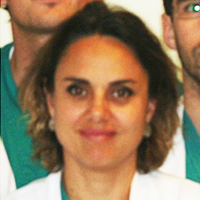MicroRNA Therapeutics in Triple Negative Breast Cancer
Published on: 27th June, 2017
OCLC Number/Unique Identifier: 7317597564
Breast cancer is a complex disease and one of the main causes of cancer-related mortality in women worldwide. In case of approximately 15% of all breast cancers, three markers i.e. estrogen receptors (ER), progesterone receptors (PR) and human epidermal growth factor receptors-2 (HER2) are not expressed, and is commonly termed as triple-negative breast cancer (TNBC). Particularly, TNBC is associated with a higher percentage of breast cancer related mortality, which is often aggressive and most frequently found with a BRCA1 mutation or increased basal marker expression. However, due to the limitations of chemotherapy and radiation based treatment; the current challenge is to establish a new strategy of diagnosis and treatment of TNBC. The deregulation of a number of microRNAs (miRNAs) in breast cancer has been widely reported. Therefore, this review is directed towards enhancing our understanding of the involvement of various miRNAs in the pathology of TNBC, their upregulations and downregulations and the effects on various factors. From recent studies a number of miRNAs are found to be related with TNBC, which have great potential to be used as a biomarker to determine the disease prognosis and predict the fate of disease. Again miRNA can be targeted to be applied as a therapeutic to provide a great benefit to the patients of TNBC by finding a new, safe, and effective treatment strategy.
Triple negative breast cancer: Early stages management and evolution, a two years experience at the department of breast cancer of CHSF
Published on: 30th June, 2020
OCLC Number/Unique Identifier: 8625623678
Breast cancer is the most common cancer in women and is a major public health problem. It is divided into several subtypes, including triple negatives. The general objective of our study is to establish the profile and the management of patients with triple negative breast cancer over a period of 2 years, operated in our department.
During our study period, triple-negative breast cancers accounted for 10% of our population. The most affected age group ranges from 50 to 60. The majority of patients in our sample are pauciparous. In the group of patients who received hormone therapy, it was mainly HRT for 4 to 6 years. 96.77% of patients consulted a health worker within 3 months of the discovery of the signs. Adenopathies are frequently present at the time of diagnosis. 93.54% of the cases have an invasive ductal carcinoma. Triple negative cancers are essentially poorly differentiated. Triple-negative cancer has a high rate of cell renewal. In our study, neoadjuvant chemotherapy is mostly indicated for triple-negative breast cancers ≥ 30 mm at diagnosis and a delayed lumpectomy is then performed in 23.52% of the patients. For tumors of < 30 mm size, a lumpectomy is performed immediately in 76.47% of the patients, followed by adjuvant chemotherapy.
Mastectomy was performed in 45.16% of patients; it was mainly indicated in front of a large tumor size associated with a small breast volume, then multifocal breast tumors. Breast reconstruction was performed in 21.42%. Radiation therapy is indicated in the majority of patients, postoperatively. In our population, 11 patients were proposed to have an oncogenetic survey; it was mainly indicated based on the Manchester criteria in front of a young age and a family history of cancer. There are two BRCA 1 mutations, one BRCA 2 mutation, and one case of absence of mutation. The therapeutic intake in case of a mutation is directed towards a prophylactic bilateral mastectomy and adnexectomy, proposed at the age of 40. Two patients had presented triple negative recurrences of their already treated breast cancer; first case PDL1 positive PD-L1 ≥ 1% treated with immunotherapy combined with chemotherapy (atezolizumab/abraxane) while the second and second PDL1 negative treated with chemotherapy alone.
Despite their low frequency, triple negative breast cancers represent a subgroup marked by pejorative characteristics, a reserved prognosis, with limited treatment options.
Mammographic correlation with molecular subtypes of breast carcinoma
Published on: 14th February, 2023
Aim: To determine the correlation between mammographic features of breast cancer with molecular subtypes and to calculate the predictive value of these features. Materials and method: This is a retrospective study of breast cancer patients presenting between January 2017 and December 2021, who underwent mammography of the breast followed by true cut biopsy and immunohistochemical staining of the tissue sample. Breast carcinoma patients without preoperative mammograms, those unable to undergo histopathological and IHC examinations and h/o prior cancer treatment were excluded. On mammography, size, shape, margins, density, the presence or absence of suspicious calcifications and associated features were noted. Results: Irregular-shaped tumors with spiculated margins were likely to be luminal A/B subtypes of breast cancer. Tumors with a round or oval shape with circumscribed margins were highly suggestive of Triple negative breast cancer. Tumors with suspicious calcifications were likely to be HER2 enriched. Conclusion: Mammographic features such as irregular or round shape, circumscribed or noncircumscribed margins and suspicious calcifications are strongly correlated in predicting the molecular subtypes of breast cancer and thus may further expand the role of conventional breast imaging.
















